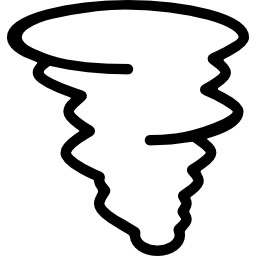Disasters happen all the time. Earthquakes strike whether we're ready for them or not. Disease outbreaks happen. Let's not downplay human-caused disasters, either, such as riots, acts of war, and terrorism. They all have unpredictable consequences for the people around them. If you run a company, do you have a business continuity plan for what you and your employees should do in any of these situations? If you have remote employees, what kind of emergency plan do you have involving them?
There's an old joke about backing up your data, "There are two kinds of computer users: those who back up their data and those who haven't lost any data yet." The same is true for emergency preparedness plans. They seem unimportant until the moment you need one.
Creating a plan for any emergency or disaster forces you to think through and document:
how you'll keep the business operating, also called a business continuity plan,
how you will account for employees, and
succession, meaning who will take control if key people are suddenly unavailable.
Businesses can find plenty of resources on how to create an emergency preparedness plan that cover these three points. I've listed several at the end of this article. What many of these resources do not include, however, is how to take into account remote employees.
How do you account for a team when people are spread out all over the world? What unique challenges come up for remote teams in the face of disaster?
Include Remote Workers in Your Accountability Plan
You could easily see how organizations with remote workers might assume they don't need any special considerations for their employees in the face of a disaster. "They're at home! We'll account for them using the same tools and methods we would on any other day."
Unusual disasters happen all the time.
Having lived through a month-long internet outage once, I know firsthand that it's not always as easy as you might expect to get in touch with people and account for them. A severe cyclone knocked out all communications infrastructure. In the first three days, the city where I lived had no landline phones, no mobile phone service, and no Internet. The Internet slowly returned to parts of the city, but it took a full month to resume at my home. More importantly, while I was in the thick of it, I never knew if internet service would return in a few hours, a few days, or a few weeks.
An outage of that magnitude sounds unusual, yes. But 9/11 was unusual, too, and so was Hurricane Katrina and all the aftermath that ensued in New Orleans. The 2011 Tōhoku earthquake and tsunami were unusual. So were the volcanic eruptions of Eyjafjallajökull in 2010 that grounded air traffic for days, and the Paris attacks of 2015, and the 2017 earthquake in Mexico… "Unusual" disasters happen all the time.
Keep in mind, too, that the whole point of having an emergency management plan is to think through and document what you will do if your standard operating procedures are interrupted.
Imagine an earthquake knocked out services in a major city where your organization has several remote employees. You'd want to account for the people and their wellbeing, but you'd also want a plan in place for who would pick up the work if the affected employees need a week or a month off to take care of themselves, their families, and their property.
For organizations that have both physical offices and remote workers, consider how you will leverage your remote workforce for business continuity if there is a disaster at the physical location.
Learn From Others
I asked a few all-remote companies whether they had plans in place regarding what to do in the event of an emergency. Many had simple contingency plans in the form of service-level agreements with companies that host their data. They were "keep the lights on" plans related to running servers. But almost no one had plans for accounting for their employees. Hubstaff, however, did.
Remote teams need to look for single points of failure
–Jared Brown
Hubstaff currently operates with a team of about 40 people worldwide. Jared Brown, CTO and CPO of Hubstaff, told me by email, "When you have a remote workforce, the unique thing is that you could have clusters of people or systems that are unavailable while the rest of the company is functioning as usual." With a team that small, a cluster of four people in the same region experiencing the same disaster, could mean 10 percent of the organization is suddenly out of the workforce.
Perhaps unsurprisingly, Hubstaff has dealt with an unexpected event that left one employee unavailable to work for two months. When you've suffered the pain before, the need for an emergency preparedness plan becomes real and apparent.
"For remote teams, you need to look for single points of failure," Brown added. "If our customer support lead was unavailable due to a disaster, who would step in and run the team? You need a plan in place that covers how to get in contact with the person or people affected by the disaster, who will take the lead, and what to do if key infrastructure is unavailable due a storm or disaster."

Make a Plan
Let's say your organization already has some type of "keep the lights on" business continuity plan in place. You know what you'll do if there's a server outage, for example. Ideally, you should review and update that plan from time to time. The next time you do (you're probably overdue, no?), use it as an opportunity to also put down some thoughts about how you will account for individuals in the event of a localized emergency.
Here are some questions to ask to help you get started.
How Many Lines of Communication?
How many lines of communication do you have open with remote workers? Likely you have business tools, such as a team chat app and email. What else do you have on file? Do you know each person's mobile number? Is it up to date? Consider collecting alternative means of communication, too, such as a personal email address and IDs for other messaging apps. Do you have an emergency contact for each employee? How long will you wait and not hear from someone before you call their emergency contact?
Outline all the ways you will try to get in touch with an employee, in order, and how long you should wait before trying different avenues. It wouldn't hurt to write down a word about empathy and consideration, too. During a disaster, people can easily forget it, as they're focused on taking immediate action. Giving someone the words, "Your safety and your family come first" can help remind them.
Brown noted that once you do get in touch with an employee who's facing an emergency or disaster, you should always agree on when the next point of contact will be. Come up with a concrete plan for when and how you'll follow up again next.
Who's on the Ground?
Are there other employees nearby who can do a physical check on one another if necessary? Do you know where you have clusters of people in geographic regions? In the event of a localized disaster, nearby people on the ground may have faster and more accurate updates than what other team members hear through news reports. At what point in an emergency timeline would you ask nearby team members to try and get in touch with people who are unaccounted for?
In addition to knowing the name of the city or town where each employee resides, it's not a bad idea to have a map pinpointing each location. Just because you have two people in Minnesota doesn't mean they're anywhere near each other. Another employee in a neighboring state could be much closer.
Who Needs to Know?
If an employee is affected by an emergency situation, who needs to know and how much do they need to know?
On the one hand, it's critical to respect an individual's privacy and not share sensitive information. On the other hand, you need to set clear expectations regarding whether or when the employee might return to work. That's especially important for the people who are tasked with picking up the missing employee's workload, as well as anyone who works closely with them.

Distribute and Verify the Plan
After developing some guidelines, distribute the plan as a work in progress to the core team. Do they understand it? Do they see holes in it? Is each person clear on what she or he should do in different types of situations?
While you might not distribute the entire emergency management plan to all employees, you can communicate the fact that one exists. You can also have employees verify their current details, such as phone numbers and emergency contacts.
Have managers or team leads share any other parts of the plan that are relevant to employees, and make sure individuals know what they can do in an emergency. Additionally, it goes a long way to acknowledge in advance of a disaster, at the point of disseminating the plan, that people's families, health, and wellbeing come first. Send the message, "We care about you. We want to know you're not in danger. But do what you need to do first." If they hear that message ahead of time, they'll know it in the moment as well.

Test the Plan
Running a simulated disaster is an eye-opening experience. A few years ago, I sat down with about a dozen colleagues and did a tabletop emergency preparedness exercise. We were in an office with mostly on-site employees, but people worked from home occasionally. Leading the group was our simulation master, and she was the only person who knew what was about to unfold.
First, the group leader set the scene. It was 8:15 a.m. Some employees were in the office. Some were home. Some were commuting. Then she announced there was breaking news about a disease that seemed to be spreading throughout the city. There were already so many confirmed cases, but the Center for Disease Control had not made any official recommendation for what to do. The simulation master asked us what we'd do.
We started to discuss the situation. How severe was it? Should we tell people it's their choice whether to stay home, stay in the office, retrieve their kids from school? As we realized we had no clear consensus, the simulation master cut us all off with an imaginary phone call from an insider at City Hall who leaked word that the whole city would go on lockdown within the hour. Now what?
The scenario played itself out as it might in real time. Some information we got turned out to be false. New developments kept occurring. We quickly realized how hard it is to reach a consensus when an emergency situation is unfolding.
What we did learn, however, is who had copies of the phone chain, who believed they were in a position to give official word about what to do, and who among us hesitated to take action. Running the simulation didn't leave us with all the answers, but it did let us explore just how challenging it can be to manage a crisis in the moment.
Having even a fairly basic emergency preparedness plan is better than none at all. Regularly update employee information such as numbers, their physical location, alternative email addresses, and emergency contacts (set a calendar reminder or perhaps use a reminder bot in your team chat app). Look for single points of failure, as Hubstaff's Jared Brown put it, and make sure someone knows who would be next in line to take on the work. Make sure the organization's core team, meaning executives and managers or team leads, know that a plan exists. Even a little bit of preparation can go a long way.
For help creating an emergency preparedness plan, small businesses can start with a checklist from the American Red Cross.
Businesses of all sizes can find more information in a free downloadable emergency planning booklet from the U.S. Federal Emergency Management Agency (FEMA).
Ready.gov/business, a website with tips for businesses run by the U.S. Department of Homeland Security, has thorough information about how to create an emergency preparedness plan for businesses, too.
__
Icons made by Freepik from www.flaticon.com, licensed by CC 3.0 BY
.






